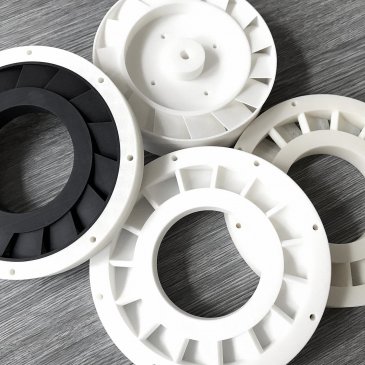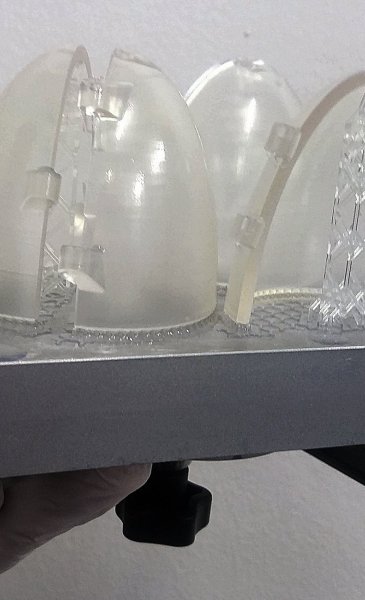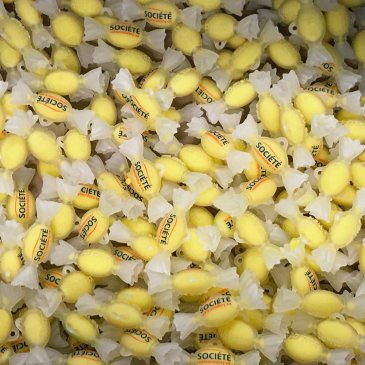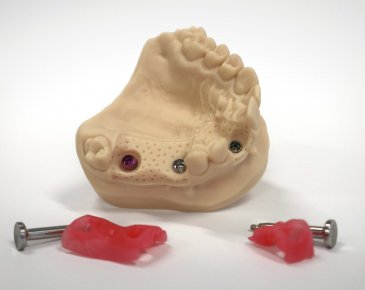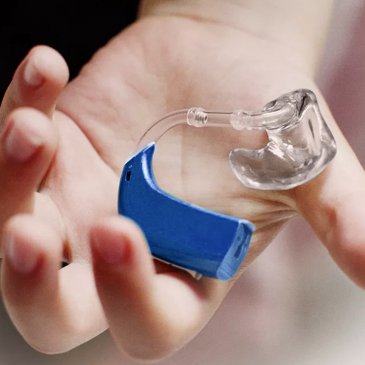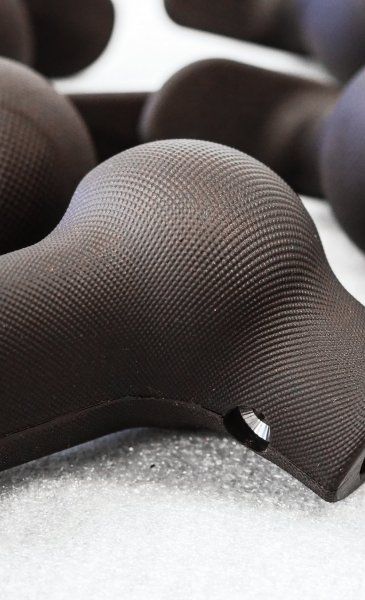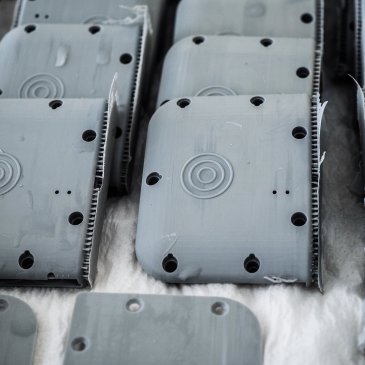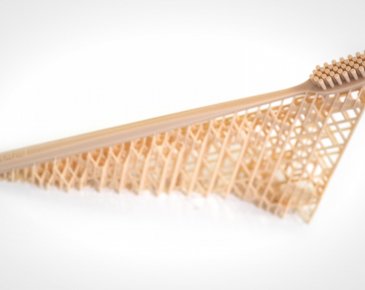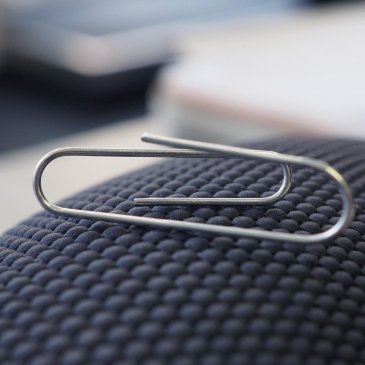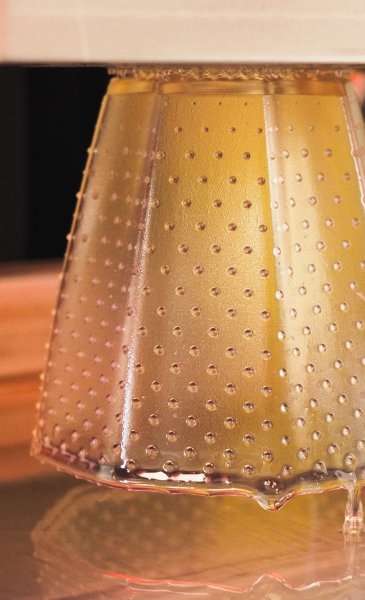DLP (Digital Light Processing) and LCD (Liquid crystal display) technologies are the latest 3D printing technologies based on stereolithography (SLA).
How it works
With this 3D printing technology, material objects are created from photosensitive resin (resin) so that they are irradiated layer by layer using an ultra-detailed projector for DLP or a screen for LCD. It is the most precise 3D printing technology, where accuracy is measured in micrometers (millionths of a meter or thousandths of a millimeter).
The projector or screen illuminates the entire layer at once. They do not render the surface point by point, as in stereolithography, where this is done using a laser. For this reason, these technologies are faster than the older method of stereolithography. The advantage of DLP / LCD 3D printing technology compared to the original SLA is that it can do with a shallower tray for the resin.
The main difference between DLP technology and LCD is that the DLP method is more accurate than LCD, but the latter is cheaper.
History
The roots of DLP technology go back to the late 1980s at Texas Instruments. The first DLP 3D printers began to be produced in 2002 by EnvisionTec. They were primarily intended for industrial use and with their high price had a very limited market.
Less than 10 years later, the Australian company Asiga launched the first DPL 3D printer based on LED technology. This kicked off the development of affordable, ultra-detailed 3D printers and changed additive manufacturing forever.
The use of cheaper LCD screens was brought about by an effort to make this technology even more affordable.
Trends
These 3D printing technologies are used today by several 3D printer manufacturers. The prices of these professional machines start from CZK 70,000, for amateur LCD printers the price is even lower. It happens that the manufacturer of DLP printers also offers LCD printers - as is the case with the mentioned Australian Asiga. But even FDM printer manufacturers are trying to expand their portfolio. For example, Zortrax, an expert in professional FDM printers, offers the Inkspire LCD printer.
DLP technology is gaining many supporters from the professional sphere, because DLP printers are easier to maintain and their repair or replacement of any of the components is easier compared to SLA printers.
Rapid development is also taking place in the range of resins. Printer manufacturers themselves offer their own resins. The increasing spread of these technologies attracts smaller independent producers as well as large multinational chemical corporations. In the next few years, we expect an increase in new materials with better optical, mechanical, biological, electrical and magnetic properties.
We foresee the introduction of these 3D printers into regular production not only in the automotive industry, but also in dental laboratories, jewelry, in injection molding plants (where they will replace large-scale production to a certain extent), in manufacturing companies and engineering in general. They are also popular with architects, developers or product designers. They will thus become an integral part not only of prototyping, but especially of the production of final products.
Advantages
-
speed - functional parts produced in a few hours, faster than SLA
-
easier maintenance and repairs compared to SLA 3D printers
-
affordable price compared to other types of industrial 3D printers
-
extreme level of detail - measured in micrometers (thousandths of a millimeter)
-
the almost smooth surface does not need additional surface treatment - thanks to the height of the layer, which is imperceptible to the human eye
-
large print area compared to other 3D printing methods
-
a great choice for serial production of functional parts
-
speeding up the casting process when the master model comes from a 3D printer
-
white and transparent resins can be pigmented according to customer preferences.
Disadvantages
-
still relatively high prices of photosensitive resins ranging in thousands of CZK
-
3D print must go through post processing
-
the necessity to observe the principles of occupational safety
-
the need to use supports for more complex geometries - there is a risk of collapse of the entire model and these places will not have a smooth surface
-
a wide range of materials requires expertise.
Are you intrigued by these new 3D printing technologies? We are the biggest expert in the Czech Republic in DLP and LCD 3D printing. We have tested and are constantly testing dozens of materials from manufacturers around the world. We will advise you on choosing the most suitable 3D printer and resin. Or choose the easiest way - send us your 3D model and we will print it for you. Contact us..

